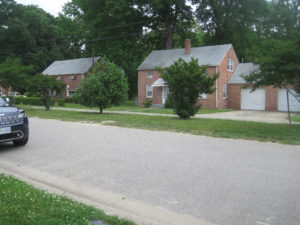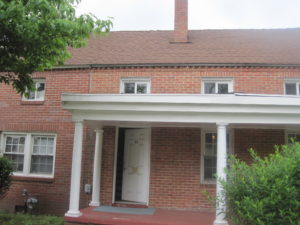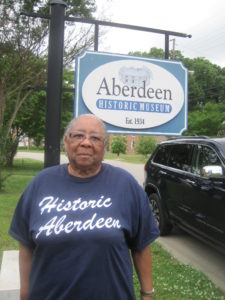One of the things I love about traveling is finding new and surprising places. Aberdeen Gardens is a perfect example of that.
In 1934, Hampton University, a school established for newly emancipated African Americans, convinced the city of Hampton, Virginia to take advantage of an opportunity offered by the New Deal. President Franklin D. Roosevelt’s program included the building of Resettlement Communities which was happening throughout the United States. Hampton chose to take advantage of the project in order to house African American workers from Hampton and Newport News. It was to be the only such community in Virginia
I had no idea of what to expect at Aberdeen Gardens. I was pleasantly surprised to see a subdivision of neat Colonial houses, sitting on manicured lawns. They appeared to be structurally sound after 81 years. They had been designed by an African American architect, Hilyard R. Robinson, and constructed by black contractors and workers. A school and a neighborhood store were also built. Many of the current residents’ families have lived there since the beginning.
I toured two of the 157 homes with Margaret Wilson, the president of the Aberdeen Historical Foundation. The first floor consisted of a “great room” that served as a living room, dining area and kitchen. It reminded me of what is being designed today, but much smaller. Upstairs held two bedrooms and a bathroom. (Larger families were given three bedrooms.) What I didn’t understand was the attached garage. Who, during the Great Depression, could afford a car?
Out back was a big yard. The large lots allowed residents to have vegetable gardens and a chicken coop or other small animals. Mrs. Wilson had grown up in Aberdeen Gardens, and still lives there. Reminiscing, she told us that, as a kid, her job on Saturday was to clean the poop off the feet of her grandmother’s chicks. No fun for her, but she did as she was told.
She either was in denial or being modest when she refused to believe that this community was very upscale for black people in the old South (and in other parts of the country). They had “moved on up,” and there were people – black and white — who were not happy about it. But she didn’t reveal any negative history.
The district of Aberdeen Gardens is on the National Register of Historic Places and Virginia Landmarks Register. It is a part of the Hampton Roads History Tour.



